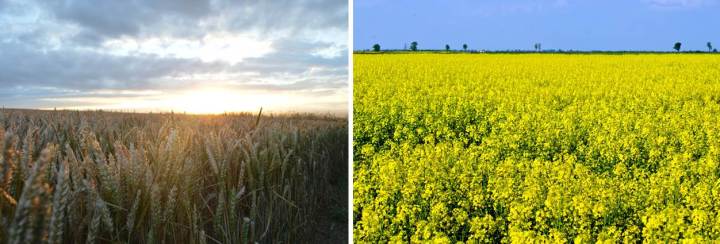Source: jappliedecologyblog.wordpress.com
Published: November 9, 2016
In this post Nahuel Policelli discusses a recent paper by Timothy M. Bowles and colleagues ‘Ecological intensification and arbuscular mycorrhizas: a meta-analysis of tillage and cover crop effects‘
*Update: On 10 November, we added a Spanish translation of this post. Nahuel provided the translation to reach out to Spanish readers interested in this topic. Journal of Applied Ecology is dedicated to making papers more accessible for an international audience and increasing engagement with the wider ecological community. This is the first post of its kind, but we encourage authors to write dual-language posts to increase the international relevance and real-world impact.
In a context of increasing global food demands, ecological intensification of agriculture emerges as an ideal approach for land management. It combines the benefits of intensive and extensive agriculture, enhancing ecosystem services and leading to sustainable ways of production. An ecosystem under ecological intensification has high rates of internal regulation processes, moderate resource inputs, low nutrient losses and high productivity (Bender et al. 2016). Targeted manipulation of soil biota in agricultural systems is starting to be considered a key aspect of ecological intensification and a way out to face one of the main causes of biodiversity loss: soil degradation.
Within soil biota, plant-symbiotic arbuscular mycorrhizal fungi (AMF) are between the most common organisms able to facilitate a plant’s resource use efficiency. It has been suggested that more than 80% of land plants form a symbiosis with AMF. This symbiosis not only enhances plant nutrient uptake, but also improves plant growth and influences ecosystem functioning. Intensively-managed agricultural systems have replaced biological functions originally provided by these and other organisms and are now highly dependent on anthropogenic inputs (i.e. fertilizers, pesticides, irrigation). These inputs in turn restrict the diversity of AMF fungal species and consequently the functionality of ecosystems.

Fields dedicated to agriculture.
What are the mechanisms by which below-ground interactions could be optimized if less intensive agricultural management is applied? A recent study by Timothy Bowles (University of California, Berkeley) and colleagues takes a thought-provoking approach to address this question. They conducted a meta-analysis of 54 field studies performed around the world to determine the impacts on the AMF community of the use of low-intensity tillage regimes and cover crops. The survey assessed how these two management techniques affect AMF colonization rates on cash crop roots, also considering the change in AMF community composition.
The study found that less intensive tillage and winter cover cropping similarly increased (nearly a 30%) AMF root colonization of summer annual cash crop roots compared with intensive tillage and winter fallow periods. Intense tillage constitutes a soil disturbance with negative effects on AMF hyphal networks and consequent reductions in root colonization. Interestingly, cover crops increased AMF colonization similarly whether tillage was used or not. These results suggest that when a cover crop is used in these systems, AMF formation in the cash crop apparently can resist some tillage. From a management perspective, this may have strong implications in agricultural systems where tillage is required for weed control and organic matter incorporation into the soil. Additionally, when AMF community composition was analyzed, the authors did not find a strong effect of winter cover cropping or less intensive tillage. Although the arrival of different AMF species could be slow after a change in soil disturbance, the role of fungal resistance structures that could remain in the soil and take advantage of the disturbance to germinate is still unclear. The authors also found increased colonization even when the cover crop used was a non-AMF host, so the role of weeds might also be important. Whether or not the presence of weeds would be enough to ensure AMF colonization of cash crops and how cash crop rotation and diversification may influence AMF diversity are still unanswered questions. So far we know, according to this study, that cover cropping and reducing soil disturbance are potential strategies for farmers to increase AMF formation even across a wide range of cash crops.

Soil degradation is one of the main causes of biodiversity loss.
The way forward
Modern agriculture will benefit from a more comprehensive consideration of below-ground ecological processes. For example, it would be relevant to know how different ecological functions are distributed within different functional groups of soil biota. Loss of some particular AMF species or group of species due to some agricultural practices may have profound changes in soil functioning. In this sense, it is also still unclear whether or not more root colonization translates into better plant performance as there might be functional complementarity and redundancy among species within the AMF community colonizing a single root system. The advance of molecular techniques in recent years allows us to have a clearer idea of fungal composition and opens many new ecological questions with applied implications. Funding for agricultural research is also needed, especially in countries where ecosystem services are endangered due to intensive agricultural practices. The so-called underground revolution (see Bender et al. 2016) will start when we are able to integrate ecological knowledge of below-ground interactions with management applications that could reduce human impact on ecosystems. In the case of AMF ecology these ideas have begun to take root.
